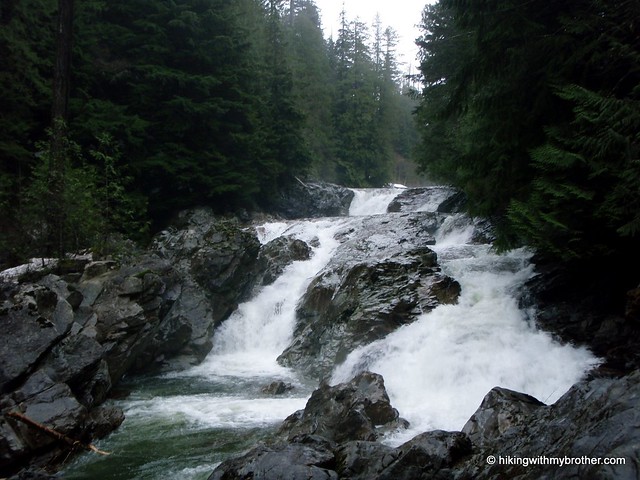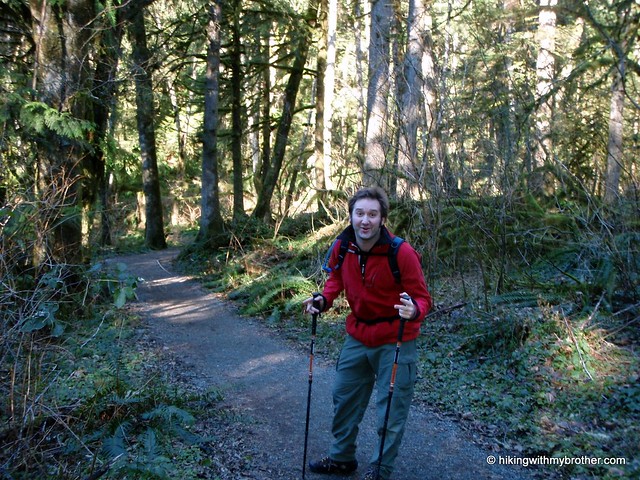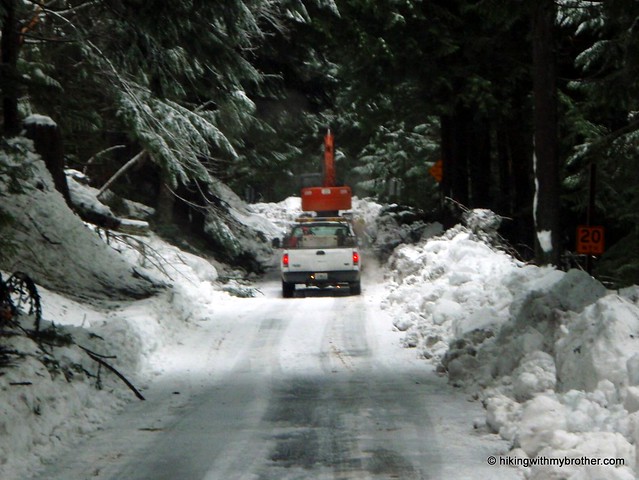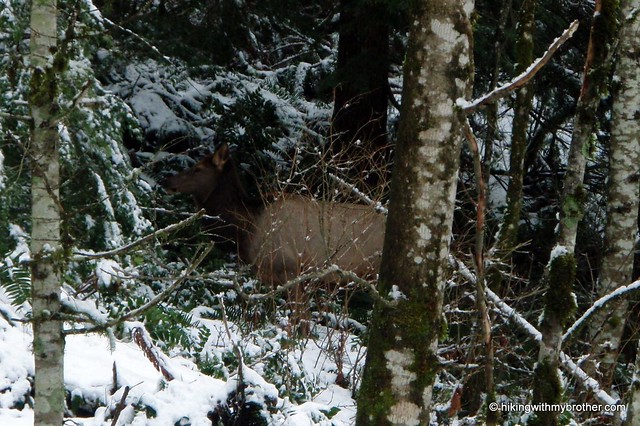Total Ascent: Negligible
Highest Point: 1200ft
Total Distance: 0.5 miles
Location: N 47° 26.2800, W 121° 39.3000
Required Permit: Discover Pass
Difficulty: Easy
 We took some time recently to tie up some loose ends around Olallie State Park. While we’d seen Twin Falls, we had not fully explored the rest of the park, which promised more trails, cliffs, and waterfalls.
We took some time recently to tie up some loose ends around Olallie State Park. While we’d seen Twin Falls, we had not fully explored the rest of the park, which promised more trails, cliffs, and waterfalls. Finding a reliable route over the Cascades to connect Seattle with the rest of the state was an early goal of Seattle’s founders. After numerous surveys and more than a little help from Snoqualmie guides, a trail was established over what would later be known as Snoqualmie Pass. By 1865 efforts were underway to expand the trail enough to support wagon traffic. Known as the Snoqualmie Pass Wagon Road, it opened in 1867 and was the first in a long series of road-building projects eventually culminating the I-90 freeway. The short trail to Weeks falls hugs the South Fork Snoqualmie River, travelling over the lingering traces of that long abandoned wagon road. The first portions of the park were acquired back in 1950, and given the name “Olallie” a Chinook jargon term for “berry,” a nod to the proliferation huckleberries found in the park during the summer months.
Finding a reliable route over the Cascades to connect Seattle with the rest of the state was an early goal of Seattle’s founders. After numerous surveys and more than a little help from Snoqualmie guides, a trail was established over what would later be known as Snoqualmie Pass. By 1865 efforts were underway to expand the trail enough to support wagon traffic. Known as the Snoqualmie Pass Wagon Road, it opened in 1867 and was the first in a long series of road-building projects eventually culminating the I-90 freeway. The short trail to Weeks falls hugs the South Fork Snoqualmie River, travelling over the lingering traces of that long abandoned wagon road. The first portions of the park were acquired back in 1950, and given the name “Olallie” a Chinook jargon term for “berry,” a nod to the proliferation huckleberries found in the park during the summer months.Weeks Falls, like Twin Falls, is now the site of a hydroelectric plant, though less effort has gone into concealing the facilities. One perk of visiting in the winter months was the high water levels, which made this 60ft cascade a little more exciting. The plant pumps out a little over 4 megawatts a year, enough to power about 800 homes.
 Rock climbers flock to Olallie for the expansive climbing walls, most of which are located just above the Iron Horse Trail. An unmarked trail up to the climbing area begins at Change Creek, winding up the mountainside to the old railroad grade. The path begins by following the creek but quickly delves deeper into the woods, past boulders and exposed rock. Ahead, a railroad bridge spans Change Creek and eventually you find yourself passing the girders holding it aloft. The cliffs, known as Deception Crags are impressive, are impressive and full of climbers year-round. Just across the bridge is the fledgling Hall Point - Change Creek Trail which eventually winds its way up to the top of Mt. Washington, and is a nice alternative to the traditional route.
Rock climbers flock to Olallie for the expansive climbing walls, most of which are located just above the Iron Horse Trail. An unmarked trail up to the climbing area begins at Change Creek, winding up the mountainside to the old railroad grade. The path begins by following the creek but quickly delves deeper into the woods, past boulders and exposed rock. Ahead, a railroad bridge spans Change Creek and eventually you find yourself passing the girders holding it aloft. The cliffs, known as Deception Crags are impressive, are impressive and full of climbers year-round. Just across the bridge is the fledgling Hall Point - Change Creek Trail which eventually winds its way up to the top of Mt. Washington, and is a nice alternative to the traditional route.We’d recommend exploring this portion of Olallie State Park while visiting Twin Falls, perhaps taking the Iron Horse Trail between the two points. However, if you’re short on time or have some toddlers or need some additional accessibility, Weeks Falls is a nice place to visit on a jaunt out of the city.
To get there, take Exit 38 off 1-90. Head left and follow the road for about a half-mile until you see the signed parking lot on your left. -Nathan
Print Google Directions >>













